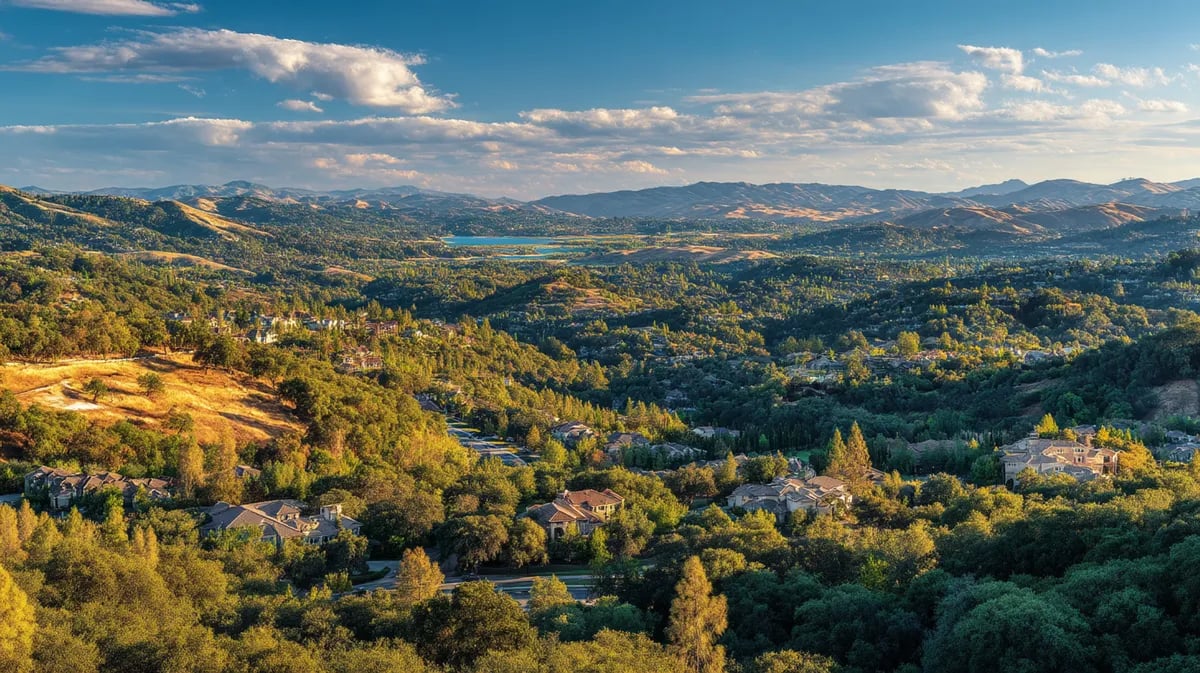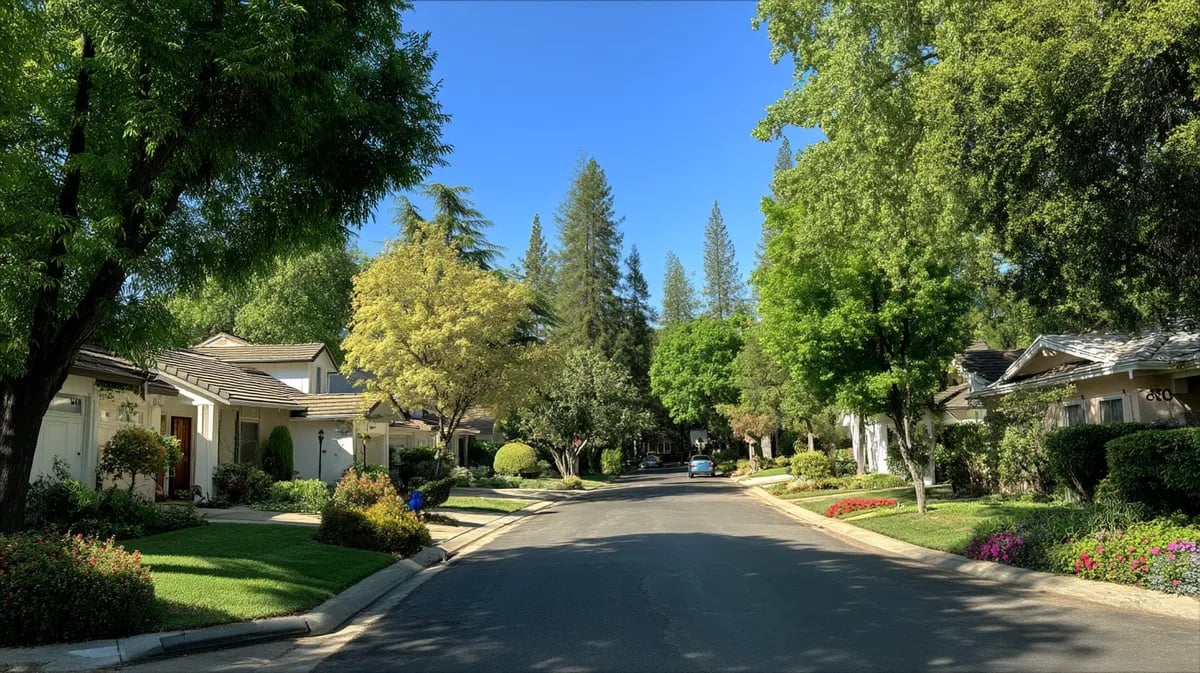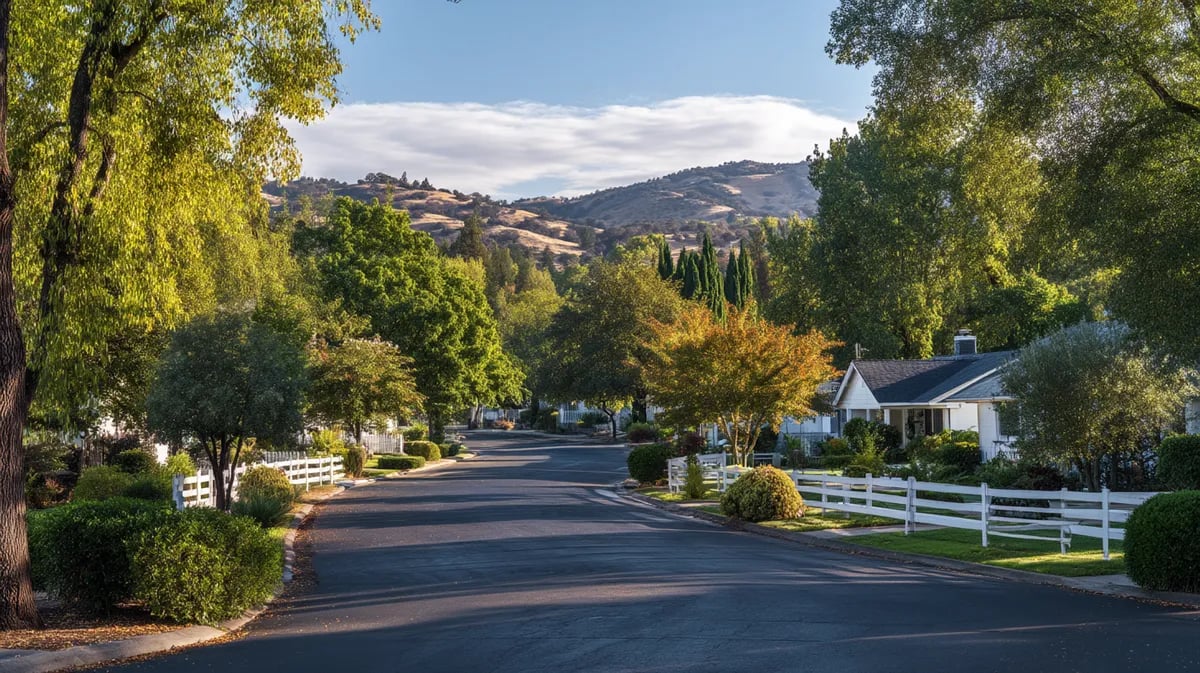Overview of El Dorado Hills
Introduction to Living in El Dorado Hills, CA
Thinking about homes for sale in El Dorado Hills, CA? You’re not alone.
Many buyers cruise up Highway 50, pass Folsom Lake, and wonder, “Is El Dorado Hills safe?” Locals will tell you it feels like a small town tucked into the Sierra foothills, but with big‑city amenities. That mix, plus the low crime and high quality‑of‑life metrics, makes the community a perennial contender on “best places to live” lists.
In short, living in El Dorado Hills means trading the traffic of Sacramento for trailheads, oak‑studded hillsides, and Friday‑night concerts in Town Center.
Geographical Location
El Dorado Hills sits on the western edge of El Dorado County, hugging the south shore of Folsom Lake and looking east toward the mountains. You’re 35 minutes from downtown Sacramento, yet a world away in terms of open space.
That geography creates naturally separated neighborhoods - Serrano, Blackstone, The Promontory - each with its own vibe, which matters because crime varies by neighborhood here, as you’ll see in the stats below.
Cost of Living in El Dorado Hills
Before we dive into crime data, let’s tackle dollars.
A recent PayScale analysis shows the cost of living is 60 % higher than the national average, with housing expenses a whopping 139% above average and a median home price topping $1.24 million, hardly shocking given the panoramic lake views.
The median household income in El Dorado Hills sits at $163,544, far eclipsing both California and U.S. norms, according to Census QuickFacts.
High incomes help fund robust sheriff staffing, community safety initiatives, and a lifestyle many consider a desirable place to live.
El Dorado Hills, CA Crime Breakdown
Property Crime
According to Crime Grade’s 2025 projection, the property crime rate in El Dorado Hills is 11.42 crimes per 1,000 residents, a “B‑” grade that’s lower than other cities of similar size.
Your chance of being a victim of property crime in El Dorado Hills runs roughly 1 in 88 in the busy south end, but improves to 1 in 168 in the quieter east villages.
Those crime maps and rates also reveal that retail corridors near Latrobe Road and El Dorado Hills Boulevard see the most incidents, while safe parks like Kalithea and Promontory remain calm.
Violent Crime
Violent offenses are even rarer. The same CrimeGrade dataset pegs the violent crime rate at 2.277 per 1,000—meaning it is safer than the average US city and less than the national average of roughly 4.
A resident’s chance of being a victim of crime in El Dorado Hills falls between 1 in 281 (south) and 1 in 524 (northwest).
Assault is the most common violent offense, followed by robbery, with murder virtually nonexistent. These detailed crime rates keep many families here long‑term.
Other Crime
“Other crime” (fraud, drug violations, quality‑of‑life issues) earns an “A‑” grade from CrimeGrade, costing residents about $104 per capita in annual economic impact.
That low‑crime profile bolsters insurance rates and property values, reinforcing the area’s low crime rates narrative.
Comparison of El Dorado Hills Crime Rates with California
Let’s put El Dorado Hills next to the state picture.
California’s property crime rate averages 16–18 per 1,000, while violent crime floats near 4.5 per 1,000. By contrast, El Dorado Hills posts 30 % lower property crime and roughly 50 % lower violent crime, less than California's state average by a comfortable margin.
Trends in El Dorado Hills Crime Rates
Over the last decade, overall El Dorado Hills crime rates have ticked down about 8%. NeighborhoodScout's analysis shows an overall crime rate of 8 per 1,000 residents, down from 8.7 in 2015.
Continued build‑out of master‑planned communities, better lighting along Green Valley Road, and an active Sheriff’s STAR volunteer patrol all contribute to the downward trend.
Comparing Crime Rates: El Dorado Hills vs. Nearby Cities
When you line El Dorado Hills up against its foothill neighbors of roughly similar size, the spread becomes clear.
CrimeGrade gives Folsom an overall D grade and a total crime rate of 41.1 crimes per 1,000 residents, a figure driven largely by shoplifting and vehicle theft near the Highway 50 retail strip.
By contrast, nearby Cameron Park earns a solid B, logging about 18.6 crimes per 1,000 residents, which is safer than the average U.S. community yet still higher than El Dorado Hills.
Just east of town, the tiny hamlet of Rescue posts an A grade with only 13.0 crimes per 1,000 residents, though its small headcount means a handful of incidents can swing the per‑capita math.
On the north shore of Folsom Lake, upscale Granite Bay lands in the B-range at 20.6 crimes per 1,000, most of them property‑related around Douglas Boulevard.
Set against these numbers, El Dorado Hills sits at a B+ with roughly 17.9 crimes per 1,000 residents, putting it at the safer end of the spectrum for larger foothill suburbs, edged out only by tiny Rescue on a purely per‑capita basis.
Identifying the Safest Areas in El Dorado Hills
Best Places to Live in El Dorado Hills
The crime map highlights the safest areas in deep green—Serrano, Blackstone, and The Promontory.
“Red areas” cluster around commercial zones where visitors outnumber residents, inflating incident density. Still, even those pockets log low crime relative to state benchmarks.
In short, El Dorado Hills in green remains the rule; “red” is the exception.
Safety Measures and Resources
Chance of Being a Victim of Crime in El Dorado Hills
Crunching crime per capita in El Dorado Hills:
With 2.277 violent and 11.42 property crimes per 1,000 residents in a standard year, the rate of crime in El Dorado translates to a 1 in 79 chance of any crime, far below most California suburbs.
Those numbers are shown as the number of crimes per 1,000 residents, the metric the FBI and CrimeGrade used to calculate the crime grades.
Community Safety Initiatives
Neighborhood watch groups, Nextdoor alerts, and quarterly “Coffee with a Cop” sessions foster transparency.
An unemployment rate of around 4.4 % in El Dorado County further dampens the property‑theft motive that drives higher crime elsewhere.
Living in El Dorado Hills: Is it a Safe Place to Live?
By most metrics—low crime rates, strong schools, affluent demographics—El Dorado Hills offers a security blanket rare in suburban California.
While crime rates are measured per resident and thus may look harsher in commercial pockets, the day‑to‑day experience “feels” safe: kids bike to school, joggers own the Serrano trails at dawn, and porch package theft rarely trends on local Facebook groups.
Conclusion and Recommendations
Summary of Crime Statistics
El Dorado Hills is lower than California averages on every major metric: violent crime (2.3 vs 4.5), property crime (11.4 vs 17+), and overall cost‑of‑crime burden ($168 per resident, less than the national average).
FBI datasets corroborate the downward trajectory, and NeighborhoodScout calls EDH one of the safest places among cities of the same size.
Future Outlook for Crime in El Dorado Hills
Continued growth, rising household income in El Dorado Hills, and low unemployment rates bode well.
Still, newcomers should study the crime map, lock vehicles, and stay engaged with sheriff alerts, simple steps to keep the rate of crime in El Dorado Hills trending south.
El Dorado Hills Safety FAQs
Is El Dorado Hills safer than the average California city?
Yes. Current crime data shows both violent and property crime rates for El Dorado Hills are 30‑40 % below California’s state averages, making it one of the safest areas in El Dorado County.
Where can I find a real‑time El Dorado Hills crime map and rates?
Crime Grade’s interactive El Dorado Hills crime map shades neighborhoods. The map highlights the safest areas in green, caution zones in red—letting you drill down to street level before scheduling home tours.
What’s the chance of becoming a victim of violent crime here?
Statistics put the chance of being a victim of violent crime at roughly 1 in 500 in the safest pockets and 1 in 281 in busier zones, well below the average US city.
How does income relate to safety?
With an income in El Dorado Hills topping $163,000, residents invest in cameras, lighting, and community programs that help keep low crime the norm.
Higher incomes also offset the cost of crime in El Dorado Hills, now about $302 per household.
Are unemployment rates linked to crime here?
Partly. El Dorado County’s 4.4 % unemployment rate is lower than many adjacent counties, correlating with reduced petty theft and burglary. Lower joblessness means fewer economic stressors that often drive property crime rate spikes.




